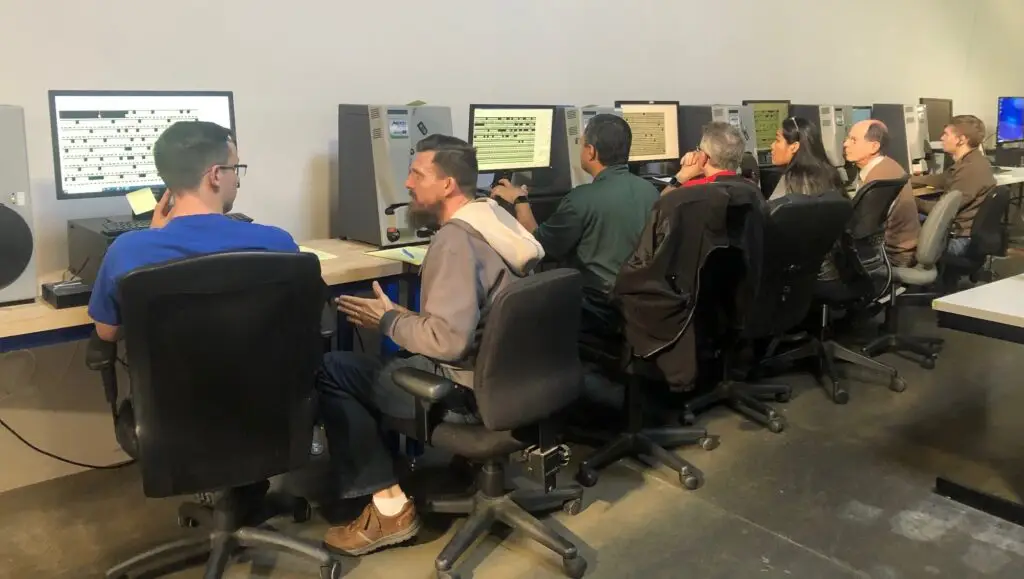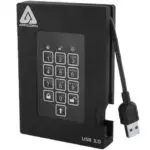Microfilm Digitization Project Enhances Efficiency, Customer Service
Onsite scanning of 60,000+ microfilm reels also adds a layer of records accessibility

At the time, the process to retrieve insurance records was – like that of most financial and insurance firms – enormously time consuming. Simplified, the process included:
- Receiving an internal request for a specific insurance record
- Having personnel locate the correct microfilm roll
- Taking the roll to a microfilm reader
- Loading the roll on a microfilm reader
- Searching the roll for the correct document
- Printing a physical copy of the record
- Unloading the microfilm roll
- Replacing the roll in its cassette case
- Returning the roll to its correct location
- Electronically sending the record to the requestor
This process was repeated hour after hour, day after day by a dedicated records management retrieval staff which fielded hundreds of requests each day from dozens of departments across the corporate campus.
Misty Sutton, Senior Vice President of Primerica Life Insurance for Business Relationship Management, estimates that in 2016 an average record retrieval took approximately 15 minutes from start to finish per request. Today, a Primerica insurance record retrieval takes seconds thanks to the firm’s investment in the digitization of their microfilm archives.
This leap in efficiency has had multiple benefits for both Primerica and its clientele:
- Increased user satisfaction due to quicker request turnaround
- Increased staff productivity and job satisfaction
- Reduced wear and tear on, and physical handling of, aging microfilm
- A secure duplicate set of policy records
Learning Curves

To learn more about digital options, Sutton turned to Crowley for a collection assessment. As a scanner manufacturer, distributor and a digitization services bureau, Crowley’s unique position in the market allows for multiple solution options. These ranged from Primerica scanning the collection themselves to a completely outsourced scanning alternative.
Initially, Primerica opted to purchase a mix of on-demand and production microfilm scanners from Crowley that would enable their staff to digitize reels for online data storage while still allowing for daily record pulls. By October, the Primerica team was trained and splitting efforts between digitization for the long term while meeting daily records requests.
Three years later, Sutton contacted Crowley again, unsatisfied with the lack of progress on the backfile digitization due to various workflow challenges with the film. While working together on a proposal to outsource the digitization to Crowley’s service division, a technician from Crowley’s technical support department traveled to Atlanta to retrain staff on how to maximize efficiency from their Mekel Technology MACH10 scanner – boosting production from ten rolls a day to ten rolls an hour. This not only helped to build trust, but also showed how a cadre of well-versed operators on multiple Mekel scanners could make short work of the microfilm backfile.
Following collaboration between Crowley and Primerica to establish best practices for both efficiency and records security, it was decided that Crowley’s digitization services would mobilize and supervise scanning operations at one of Primerica’s Atlanta, Georgia locations.
Securely On Site and On Track
Moving quickly, five Mekel MACH10 scanners powered by QuantumScan software were shipped from Crowley’s San Dimas, California manufacturing facility. The scanners were calibrated and set-up by Crowley field technicians on location and three local staff were hired and trained by Crowley as scan operators. An experienced Crowley project manager was transferred to Atlanta for the duration of the contract to oversee daily operations. Incorporating Primerica’s own MACH10, the total scanner count was six.

Having started with a contract to scan and process 21,000 microfilm rolls in ten weeks, the total was pushed to 30,000 rolls once the team had proven the ability to exceed the expected production goals. To maintain maximum security, the microfilm images were scanned to Apricorn Aegis encrypted portable hard drives with keypad authentication security (codes created by Primerica). Per Primerica specifications, all images were scanned as bitonal TIFF images at 200 dpi directly to the encrypted drives. From there, the images were processed by a separate team utilizing Mekel Technology’s QuantumProcess software. Processing included splitting the blips to match Primerica’s recordkeeping at an average rate of 12,500,000 image per week.

Once processed, the images/records were output to an additional secured, encrypted drive, ensuring that no one other than an authorized Primerica employee had access to any of the images or files.
Upon final approval of the images by Primerica staff, the digitized microfilm data was uploaded into Primerica’s existing electronic content management system (ECM), IBM Content Manager.
In addition to the challenges of mobilizing on-site and scanning a high volume of microfilm reels on a condensed schedule, specific attention was paid to:
- Scanning a collection that was a combination of simplex, duplex and propagation microfilm reels. This required a microfilm scanner/software combination that could easily read and capture multiple formats of microfilm as well as scan operators with the technical expertise to manipulate the scanner settings to maximize image quality based on the type of roll being scanned.
- Adding a blip to the target image of each roll when necessary to ensure images were included in the verification of indexes provided by Primerica
- Adding microfilm leaders and trailers as needed
- Accommodating daily record pulls while scanning active record files. As needed, Primerica staff would pull reels from the daily scanning workflow to allow for timely record request fulfillment. Once a record was downloaded using a reader printer, the reel was put back into the workflow. This required constant coordination between the records management and the scanning staff.
Digitizing Now to Ensure the Future
Following the successful completion of the first phase of the microfilm digitization project, Primerica granted Crowley a second phase for the digitization of 30,000+ rolls to be completed in a five-month period. Delayed by, and then scanned and processed safely during, the height of the COVID-19 epidemic, the ability to have these records online and securely accessible have taken on even more importance as Primerica serves its clients.
Notes Sutton, “Having the ability to access a microfilm backfile of this size digitally has made a significant impact on how we can conduct business and service our clients and representatives. While our direction changed from the initial intent to scan in-house, Crowley persevered to prove their capacity to help Primerica achieve its goal of getting more than 60,000+ rolls of microfilm records online in less than 18 months, including a seven-month break.” She continues, “Ultimately it wasn’t just one Crowley division that provided a solution, it was their unique combination of scanning hardware, technical support and digitization services that enabled Primerica to succeed with this portion of our long-term digitization plan.”
